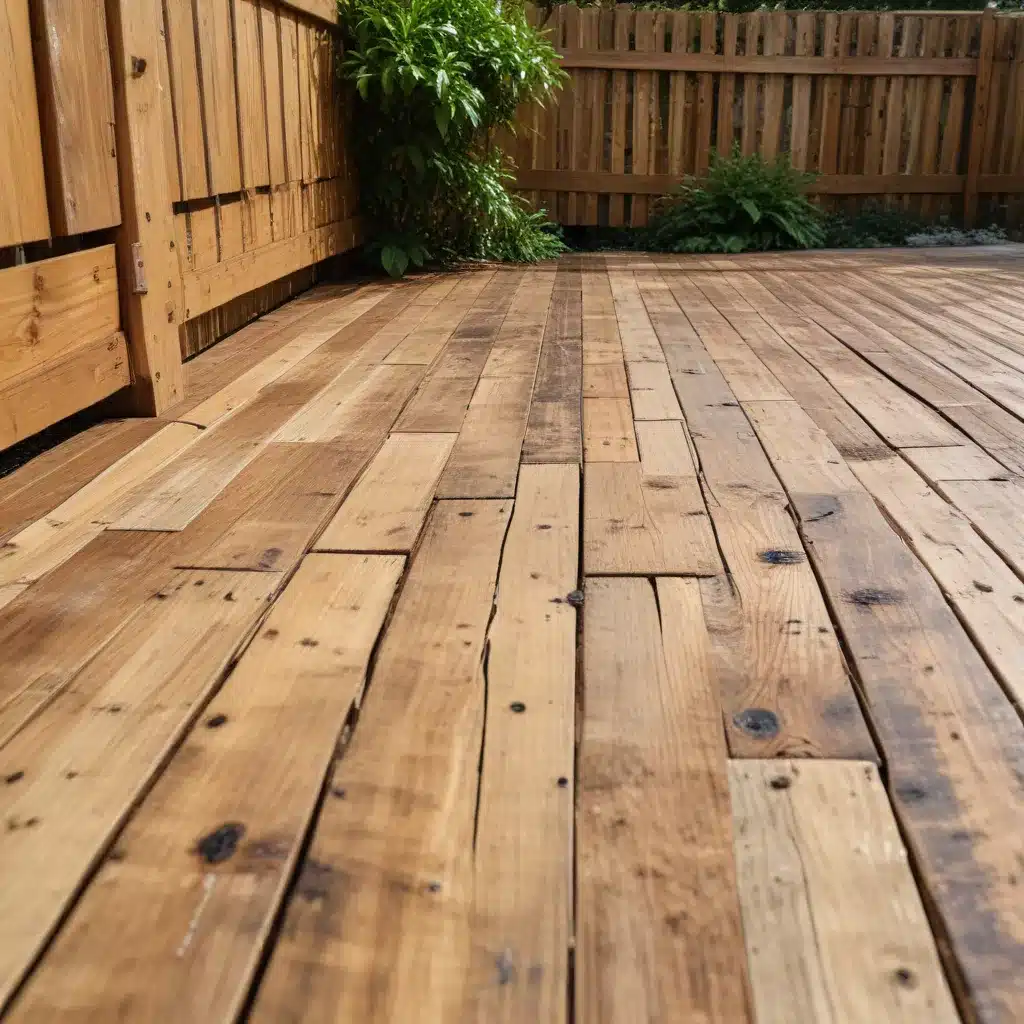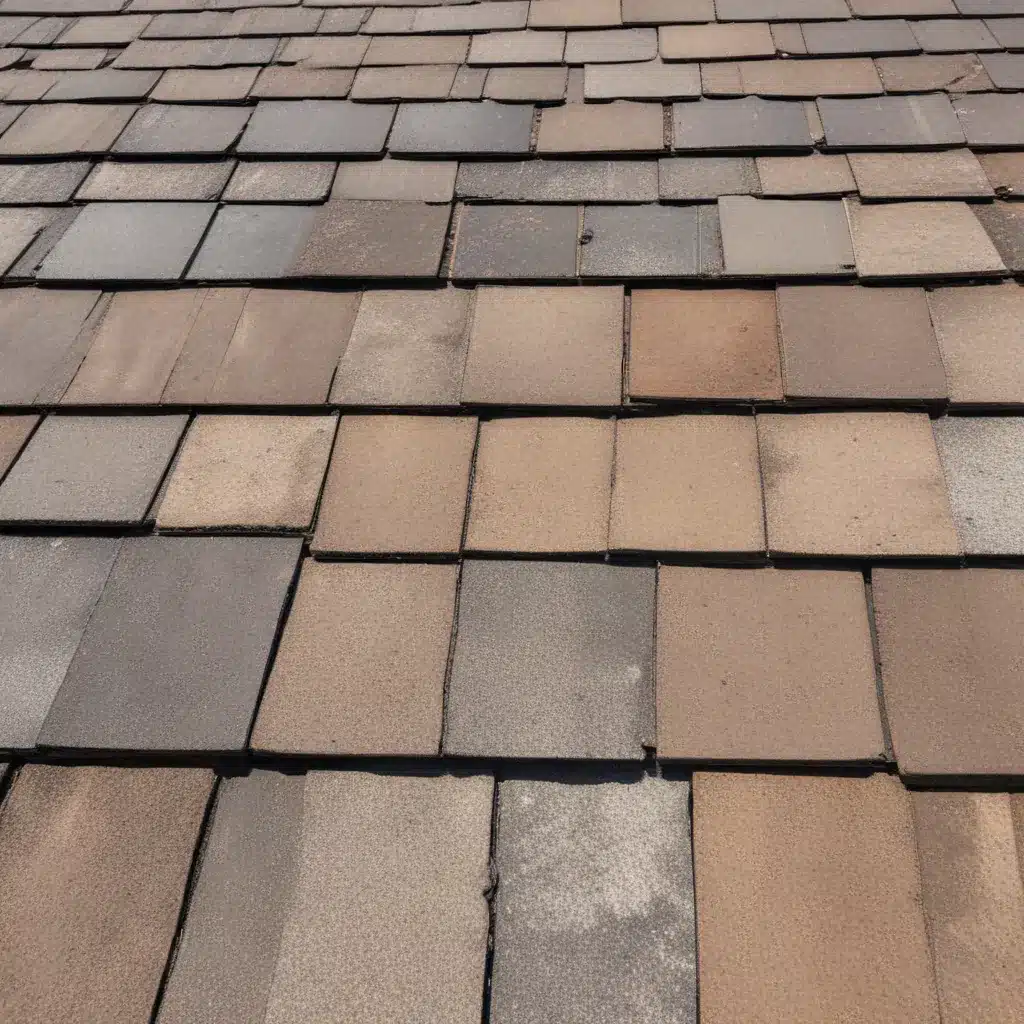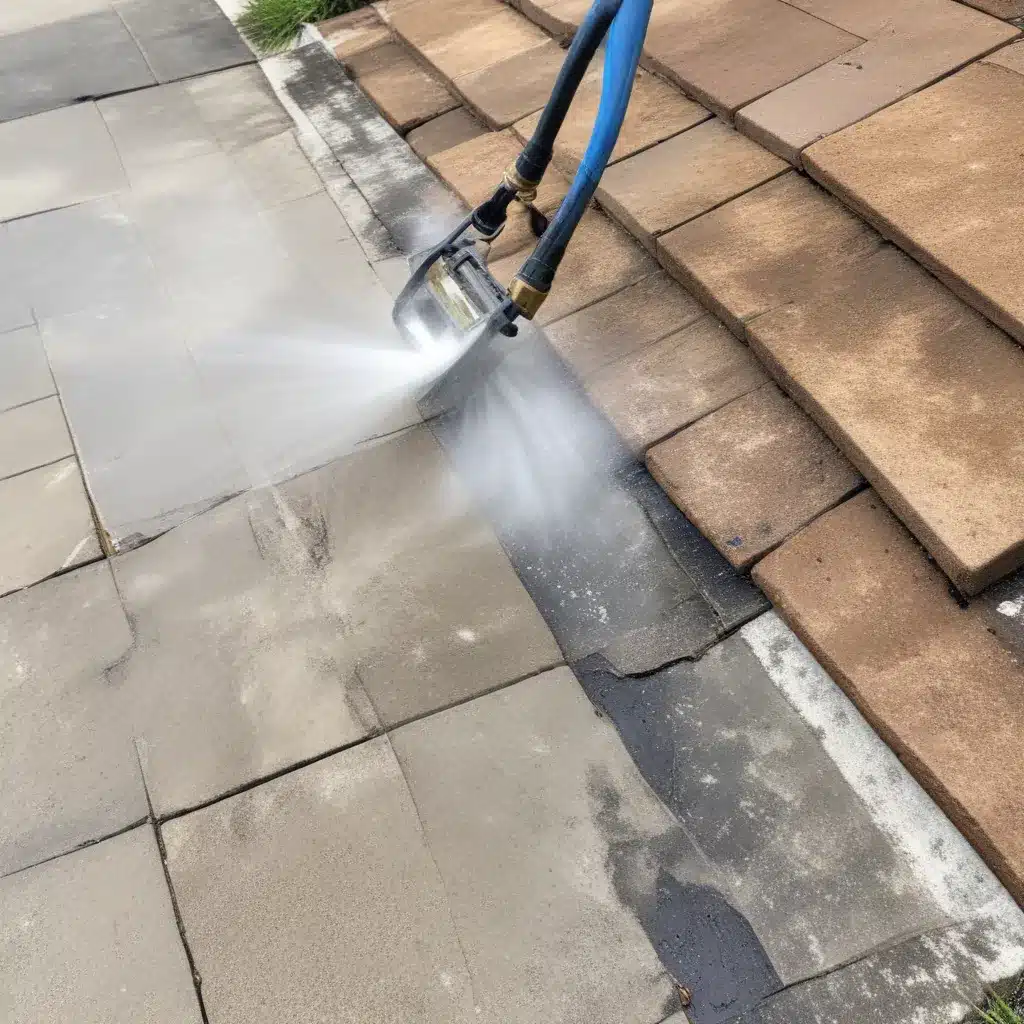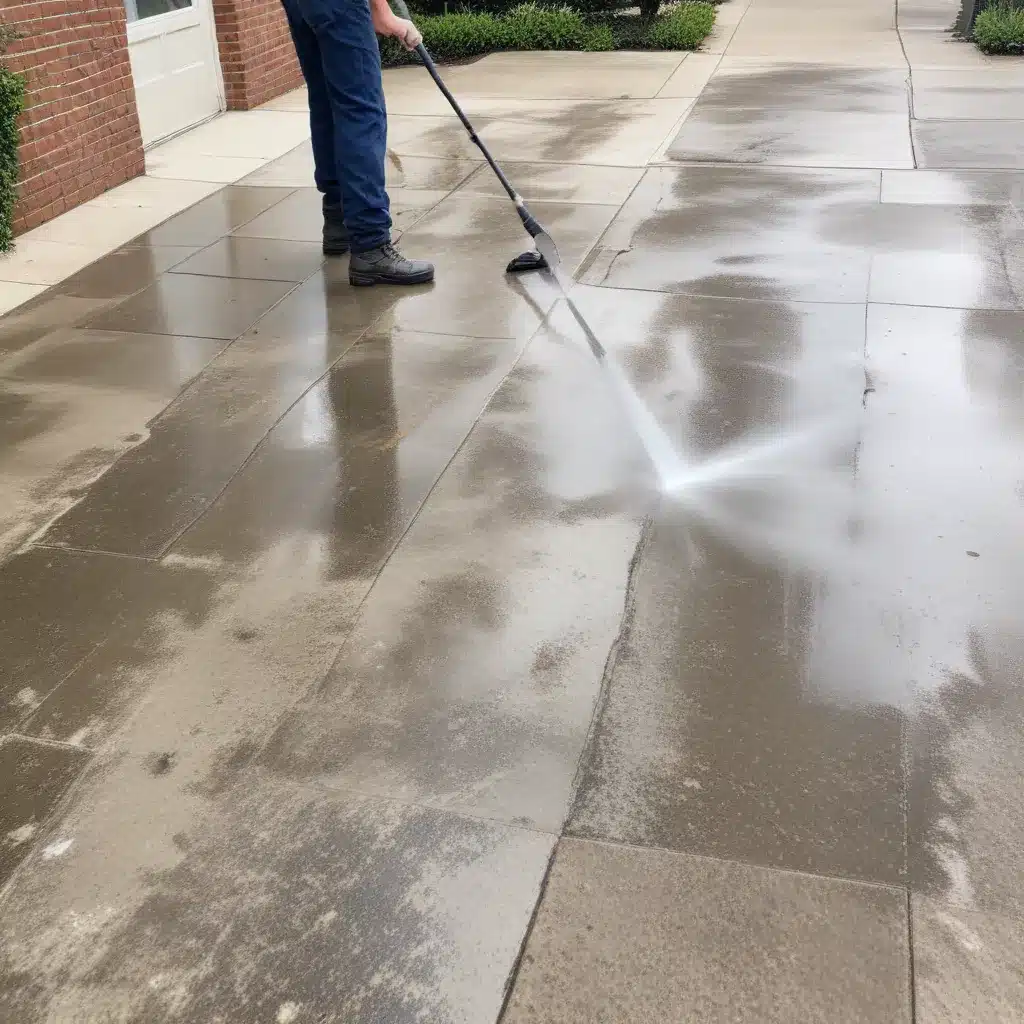
Unlocking the Natural Beauty: Navigating Pressure Washing Regulations in St. Louis
In the bustling city of St. Louis, maintaining the beauty and longevity of outdoor structures is a top priority for homeowners and property managers alike. When it comes to reviving the natural charm of wooden fences and decks, pressure washing has emerged as a popular and effective solution. However, navigating the local regulations and best practices can be a complex endeavor.
Regulatory Compliance in St. Louis
Before embarking on a pressure washing project, it’s crucial to familiarize yourself with the applicable regulations in the St. Louis area. The City of St. Louis requires that all pressure washing activities adhere to the Clean Water Act, which aims to protect local waterways from pollutants. This means that the discharge of wastewater, chemical residues, or other contaminants onto the ground or into storm drains is strictly prohibited.
To ensure compliance, property owners must take proactive measures to contain and properly dispose of all runoff generated during the pressure washing process. This may involve the use of tarps, temporary berms, or vacuum-assisted systems to capture and collect the waste, which must then be disposed of at an approved facility. Failure to comply with these regulations can result in hefty fines and potential legal consequences.
Pressure Washing Techniques and Best Practices
When it comes to reviving the natural beauty of wooden fences and decks, the choice between pressure washing and alternative methods can have a significant impact on the final outcome. While pressure washing can be a highly effective way to remove years of built-up grime, mildew, and discoloration, it must be done with great care to avoid damage to the underlying wood.
The Pros and Cons of Pressure Washing
One of the primary advantages of pressure washing is its ability to quickly and efficiently remove stubborn dirt, mildew, and old paint or stain. This can be particularly beneficial for older structures that have undergone significant weathering or neglect. However, if not executed properly, pressure washing can also lead to unwanted outcomes, such as splintering, fuzzing, or even structural damage to the wood.
To mitigate these risks, it’s recommended to opt for a lower-pressure setting, typically between 500 and 1,000 PSI, and to maintain a safe distance of at least 6 inches from the surface. Using the appropriate nozzle size and angle can also help to ensure a gentle, yet effective, cleaning. In cases where the wood is particularly aged or fragile, a more gentle approach, such as hand-scrubbing with a stiff-bristle brush, may be the safer choice.
Alternative Cleaning Methods
For homeowners or property managers who prefer to avoid the potential risks associated with pressure washing, there are several alternative cleaning methods available. Chemical strippers and deck cleaners can be an effective way to remove old finishes and restore the natural wood tone, without the high-pressure impact. These products, when used in accordance with the manufacturer’s instructions, can often produce similar results to pressure washing while being more gentle on the underlying material.
Another option is to explore eco-friendly cleaning solutions, such as those based on plant-derived ingredients or biodegradable formulas. These products not only minimize the environmental impact but also offer a safer alternative for those concerned about the use of harsh chemicals near their property or landscaping.
Cost Considerations for Pressure Washing in St. Louis
The cost of pressure washing services in the St. Louis area can vary significantly depending on the size of the project, the condition of the wood, and the specific techniques or products required. On average, homeowners in St. Louis can expect to pay between $0.50 and $1.50 per square foot for a basic pressure washing service, with the potential for additional charges for more complex tasks or specialized equipment.
Factors Influencing Pressure Washing Costs
– Project Size: Larger decks, fences, or other outdoor structures will generally cost more to pressure wash than smaller areas.
– Surface Condition: Heavily soiled, weathered, or painted surfaces may require additional cleaning steps, increasing the overall cost.
– Eco-Friendly Products: The use of specialized, environmentally friendly cleaning solutions can add to the overall cost but may be a worthwhile investment for environmentally conscious homeowners.
– Accessibility: Projects in hard-to-reach areas or with limited access may require additional equipment or labor, resulting in higher costs.
Budgeting for a Pressure Washing Project
When planning a pressure washing project, it’s essential to factor in not only the initial cleaning cost but also any necessary repairs or refinishing that may be required after the process. For example, if the pressure washing reveals significant damage or deterioration to the wood, the cost of replacing or repairing those areas should be included in the overall budget.
To ensure a successful and cost-effective pressure washing project, it’s recommended to obtain multiple quotes from reputable local contractors, carefully review the scope of work and any additional services included, and negotiate pricing where possible. By taking the time to plan and budget appropriately, homeowners and property managers in St. Louis can enjoy the rejuvenated beauty of their outdoor spaces without breaking the bank.
Embracing Eco-Friendly Pressure Washing Practices
As the awareness of environmental sustainability continues to grow, many homeowners and property managers in St. Louis are seeking out pressure washing solutions that minimize their ecological footprint. Fortunately, there are a variety of eco-friendly approaches and products available that can help to reduce the impact of pressure washing activities.
Biodegradable Cleaning Solutions
One of the primary concerns with traditional pressure washing is the potential for chemical runoff and the subsequent contamination of local waterways. To address this issue, many manufacturers have developed biodegradable and plant-based cleaning solutions that are safe for the environment. These eco-friendly products are designed to break down quickly and avoid leaving behind harmful residues.
When selecting an eco-friendly pressure washing solution, it’s essential to look for products that are certified by organizations such as the Environmental Protection Agency (EPA) or the U.S. Green Building Council (USGBC). These certifications help to ensure that the cleaning agents meet stringent standards for environmental safety and performance.
Containment and Waste Disposal
In addition to using eco-friendly cleaning products, pressure washing contractors in St. Louis must also adhere to local regulations regarding the containment and disposal of wastewater and other waste generated during the cleaning process. This may involve the use of temporary berms, tarps, or vacuum-assisted systems to capture and collect the runoff, which must then be disposed of at an approved facility.
By prioritizing eco-friendly practices and responsible waste management, homeowners and property managers in St. Louis can enjoy the benefits of pressure washing while minimizing their impact on the local environment. This not only helps to protect the community’s natural resources but also demonstrates a commitment to sustainable property maintenance.
Reviving Wooden Fences and Decks: A Case Study in St. Louis
To illustrate the practical application of pressure washing and other restoration techniques, let’s consider a case study of a residential property in the heart of St. Louis. The homeowners, a young family, had recently purchased a charming bungalow with a well-worn wooden fence and deck that had seen better days.
Assessing the Condition and Developing a Plan
Upon closer inspection, the homeowners discovered that the fence and deck were in a state of significant disrepair, with extensive weathering, peeling paint, and the growth of mildew. Recognizing the need for a comprehensive restoration, they reached out to a reputable pressure washing service in the area to assess the situation and develop a plan of action.
The pressure washing technicians began by conducting a thorough evaluation of the fence and deck, taking into account the specific challenges presented by the aged and deteriorating wood. Based on their assessment, they recommended a two-step approach: first, utilizing a chemical stripper to remove the old paint and stain, followed by a gentle pressure washing to clean the underlying wood.
Implementing the Restoration Process
To ensure compliance with local regulations, the technicians took great care in containing the runoff and properly disposing of all waste generated during the cleaning process. They used a series of temporary berms and tarps to capture the wastewater, which was then transported to an approved disposal facility.
After the initial stripping and pressure washing, the technicians conducted a careful inspection of the wood, identifying any areas that required minor repairs or replacement. Once these remedial measures were completed, they proceeded to apply a high-quality, semi-transparent stain to the fence and deck, chosen to complement the natural beauty of the wood and enhance the overall aesthetic of the property.
The Remarkable Transformation
The results of the restoration process were nothing short of remarkable. The once-weathered and discolored fence and deck were now transformed, with a vibrant, natural-looking finish that perfectly complemented the charming bungalow. The homeowners were thrilled with the outcome, not only for the aesthetic improvement but also for the increased property value and the peace of mind that came with knowing their outdoor structures were well-maintained and protected.
This case study highlights the importance of working with experienced pressure washing professionals who understand the nuances of local regulations, best practices, and eco-friendly cleaning solutions. By partnering with a trusted service provider, the homeowners in this example were able to revive the natural beauty of their outdoor spaces while ensuring compliance with all relevant guidelines.
Conclusion: Embracing the Rejuvenating Power of Pressure Washing in St. Louis
In the vibrant city of St. Louis, maintaining the beauty and longevity of wooden fences and decks is a priority for homeowners and property managers alike. By understanding the local regulations, exploring the various pressure washing techniques and alternatives, and embracing eco-friendly practices, residents can unlock the true potential of their outdoor spaces.
Whether you’re seeking to revive an aging fence, breathe new life into a weathered deck, or simply maintain the overall aesthetic appeal of your property, the experts at https://pressurewashstlouis.com/ are here to guide you through the process. With a deep understanding of the unique challenges and requirements in the St. Louis area, our team is dedicated to providing reliable, cost-effective, and sustainable pressure washing solutions that will leave your exteriors looking their best.
So, if you’re ready to unlock the natural beauty of your wooden structures and ensure their longevity, we encourage you to explore the wealth of resources and services available in the St. Louis area. By partnering with the right professionals, you can enjoy the rejuvenating power of pressure washing while safeguarding the environment and your investment.






